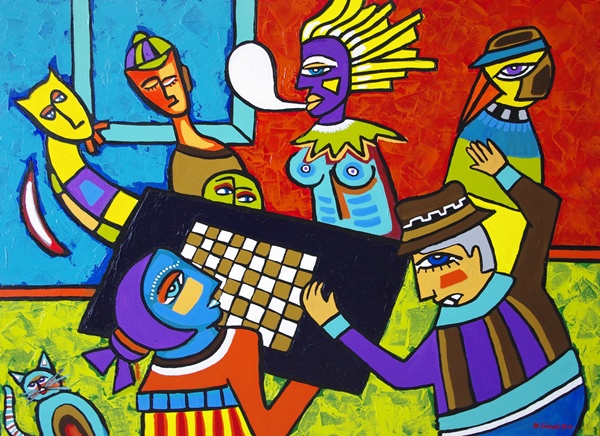Gamification and Games at Work that Work
This is one of our free-to-access content pieces. To gain access to all Ideas for Leaders content please Log In Here or if you are not already a Subscriber then Subscribe Here.

Employers are using gamification — the introduction of games in the workplace — to make work more enjoyable and ‘fun’, and hopefully improving, in the process, employee engagement and motivation. But mandated fun is considered no fun at all, unless employees consent to the game. Without consent, new research shows, the gamification attempt will backfire; with consent, gamification will engage employees even though the essential core task has not changed.
Researchers have long noted that employees will sometimes spontaneously create games as a way of improving their work experience, helping them to not only pass the time but also alleviate the less pleasant aspects of their work. More recently, managers and employers have gotten involved by creating their own games for employees to play in an effort to keep employees motivated and engaged.
The ‘mandated fun’ of gamification, however, will only work if employees consent to the game; otherwise, the attempt will have the opposite effect. This is the conclusion of researchers Ethan Mollick and Nancy Rothbard, both of the Wharton School of the University of Pennsylvania, whose research also revealed three employee consent factors:
For their research, Mollick and Rothbard conducted an experiment involving gamification with the salesforce of an online daily deal (discount coupons available for a limited time) platform. The job of salespeople at this venture was to contact local businesses to convince them to sell coupons for discounted products or services on the venture’s local websites. They earned a commission based on the dollar value sold of their client’s coupons.
For the experiment, Mollick and Rothbard used professional game designers to create a basketball-themed game. The game rewarded sales teams with points when their members closed deals. Not all closed deals earned the same points — the closing of a warm lead was a layup, for example, while the closing of a cold-called lead was a more valuable jump shot. Large display screens showed basketball animation when teams scored points. Winning teams received a bottle of champagne.
Three floors of salespeople were involved in the experiment. The game described above was played on one floor, and not played on another floor (this second floor was the control set of participants). The third floor involved in the experiment was an alternative control floor; it featured leaderboards showing the results of sales but without the game’s bells and whistles — no basketball animation, no champagne for winners, etc.
Pre- and post-interview surveys were used to gather the data on consent and ‘affect’ — that is, the emotional feelings engendered by the game.
The results of the experiment confirmed the researchers’ hypotheses that gamification led to a positive impact on the feeling of employees about their work as long as they consented to the game. The research also showed that ‘playing’ the game mattered — the salespeople on the floor with only the leaderboards did not have the same reaction to the game as those on the full game floor. In fact, performance levels on the leaderboards floor revealed were lower than on the floor that had no game elements at all; employees on this floor were only aware of a management-imposed intervention. (There was, it should be noted, neither a positive nor negative effect on workers’ feelings about their job.)
A game is not inherently a positive experience for employees. Managers who want to introduce gamification into their workplaces must take steps to acquire the tacit or explicit ‘consent’ of employees. A first step is to be very clear about the rules of the game; any confusion about the rules of the game will cause employees to disengage.
The greatest predictor of consent, according to the research, is whether employees are actively involved in similar games outside of work. One way to help ensure or encourage consent if for managers to solicit ideas about what games might be fun. This will likely highlight the type of games in which employees are involved outside of work. Soliciting ideas will also demonstrate that employees have input into the game, which will mitigate the ‘mandatory’ aspect of the fun.
Another important lesson for managers is that gamification requires a full commitment by management. The ‘leaderboard’ initiative was ineffective, and in fact partially counterproductive. It had all the hallmarks of a management intervention without any of the fun elements of the game.
One of the most important implications of the research is that it offers employers a new avenue for motivating or compensating employees without changing the fundamental nature of the task itself. In other words, gamification, when well designed with the parameters described above, will enhance productivity and worker feelings about the workplace without additional compensation or resources.

Ideas for Leaders is a free-to-access site. If you enjoy our content and find it valuable, please consider subscribing to our Developing Leaders Quarterly publication, this presents academic, business and consultant perspectives on leadership issues in a beautifully produced, small volume delivered to your desk four times a year.

For the less than the price of a coffee a week you can read over 650 summaries of research that cost universities over $1 billion to produce.
Use our Ideas to:
Speak to us on how else you can leverage this content to benefit your organization. info@ideasforleaders.com